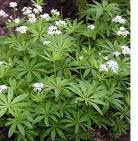Field scabious is native to Europe and parts of North Africa , and is an invasive or noxious weed in North America , having escaped from gardens where it grew as an ornamental plant. It starts with rosette shaped foliage and winters in this for, but in summer, July through to September it has light lilac, or blue flower heads which grow from a leafless stalk. It’s a member of the Dipsacaceae family so is a relative of teazle. The plant was named Knautia in honour of the 17th century botanist Dr. Knaut who came from Saxony .
 Field scabious can grow to heights of up to 4 feet high, and likes fields and woodlands, preferring moist conditions.
Field scabious can grow to heights of up to 4 feet high, and likes fields and woodlands, preferring moist conditions. The seed head which closely follows the flowers has several bristly hairs growing from its top and the many seeds contain an oil which contains capric and caprylic acid, both of which are used in high-performance jet engine oils and top-quality lubricants as well as in the preparation of some dietary fats which are currently obtained from coconut oil and palm kernel oil. Having locally grown sources of such oil whether in Europe or on North America would clearly have economic benefits. Research is being undertaken to discover whether or not it would be commercially viable to grow field scabies for their oil.
 The plant has been used in traditional medicine for centuries, and John Gerard, the English herbalist of the 16th century wrote that the plant was good for skin problems and a decoction should be drunk for a few days as a treatment for scabs and the juice was good for this to if used as an ointment. He also wrote that drinking the decoction with treacle promoted sweating, “freeing the heart from any infection or pestilence.” Writing a century later Culpeper declared that it was “very effectual for coughs, shortness of breath and other diseases of the lungs.” He also suggested taking a decoction of the herb, either fresh or dried, and making it into wine, and drinking it over an unspecified period of time for pleurisy. Fresh bruised leaves were recommended for getting rid of carbuncles, which would disappear, so Culpeper averred, in three hours. He also said that the decoction of the root was good for skin complaints, applied on affected parts, and if drunk was a blood purifier.
The plant has been used in traditional medicine for centuries, and John Gerard, the English herbalist of the 16th century wrote that the plant was good for skin problems and a decoction should be drunk for a few days as a treatment for scabs and the juice was good for this to if used as an ointment. He also wrote that drinking the decoction with treacle promoted sweating, “freeing the heart from any infection or pestilence.” Writing a century later Culpeper declared that it was “very effectual for coughs, shortness of breath and other diseases of the lungs.” He also suggested taking a decoction of the herb, either fresh or dried, and making it into wine, and drinking it over an unspecified period of time for pleurisy. Fresh bruised leaves were recommended for getting rid of carbuncles, which would disappear, so Culpeper averred, in three hours. He also said that the decoction of the root was good for skin complaints, applied on affected parts, and if drunk was a blood purifier. The whole plant has astringent properties and is mildly diuretic. An infusion of the chopped whole plant can be used for all skin complaints. Scabious comes from the Latin word scabiosa meaning a type of leprosy or other bad skin disease, so it is clear how the ancients used this plant. The Welsh call this plant clafrllys y maes, and in Irish Gaelic it is cab an ghasain. It is known by a number of colloquial names including Blue Buttons, Meadow Widow Flower, Gypsy Rose, Lady’s Pincushion and others.
The Physicians of Myddfai used the field scabious with other plants for fevers, as this remedy illustrates:
“There are four kinds of fevers, deriving their origin from the summer, viz. latent fever, intermittent fever, ephemeral fever, and inflammatory fever. The fifth fever is typhus, and this kind proceeds from the brain. A latent fever is relieved by an emetic, a cordial, and cauteries. Thus it originates; from the over generating of tough humor in the stomach, from which results a distaste for food, and lassitude during summer. The mugwort, madder, meadow sweet, milfoil, hemp, red cabbage, and the tutsan, all these seven herbs enter into the composition of the medicine required. Whosoever obtains them all, will not languish long from a wounded lung, or need fear for his life. Any of the following herbs may be added thereto, butcher's broom, agrimony, dwarf elder, amphibious persicaria, centaury, round birth wort, field scabious, pepper mint, daisy, knap weed, roots of the red nettle, crake berry, St. John's wort, privet, wood betony, the roots of the yellow goat's beard, heath, water avens, woodruff, leaves of the earth nut, agrimony, wormwood, the bastard balm, small burdock, and the orpine.”
This is another use they had for this plant:-
“For the bite of a viper. Take the round birthwort, knapweed, and field scabious; mix with water and drink. The Physician's three master difficulties are, a wounded lung, a wounded mammary gland, and a wounded knee joint.”
Clearly the physicians of old found this a very useful, beneficial herb.


















